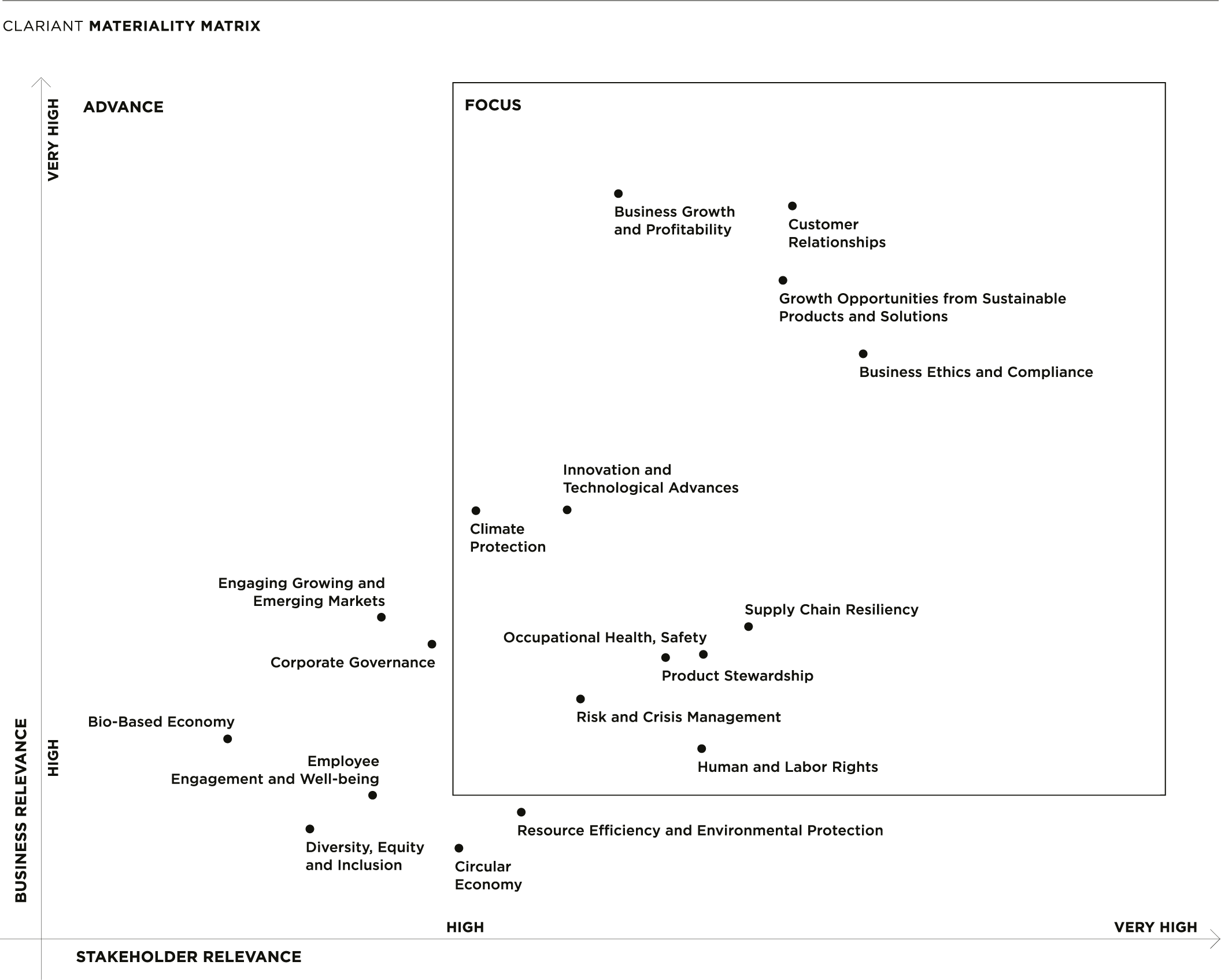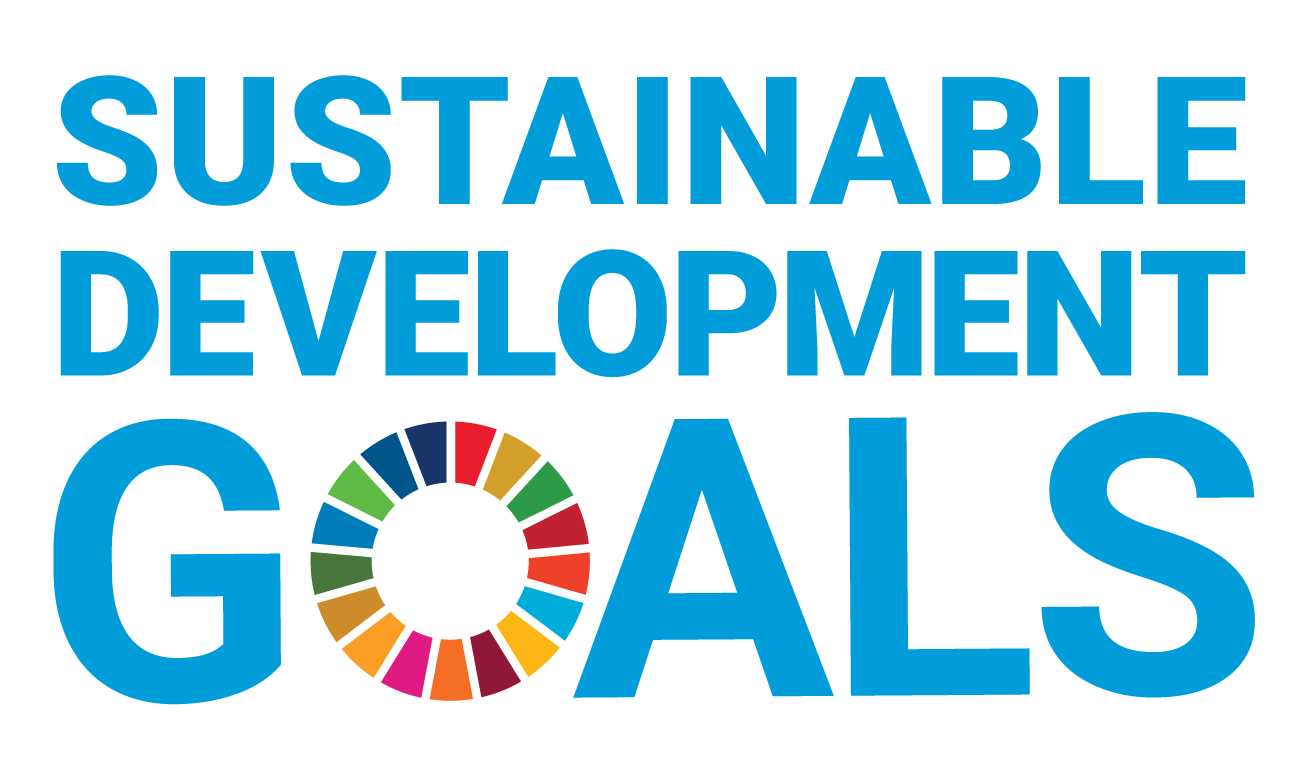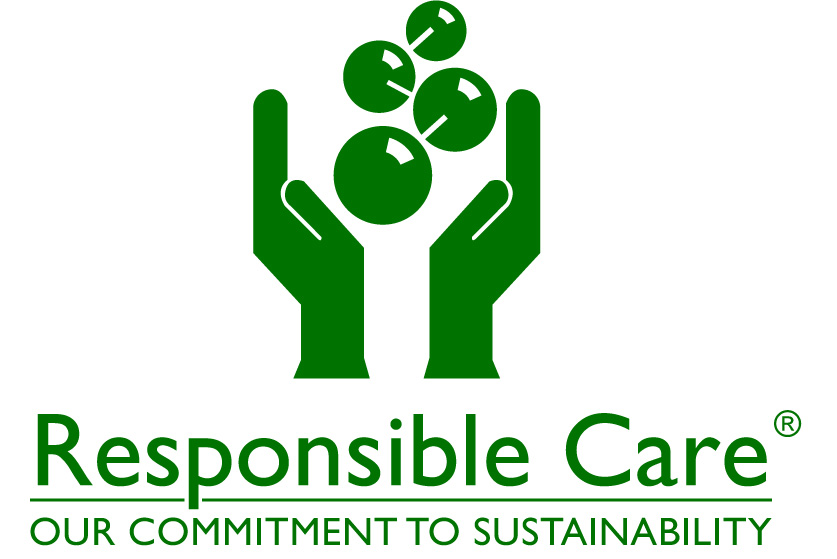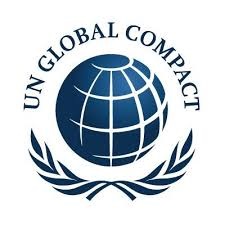
Transparency in everything we do
OUR MANAGEMENT APPROACH
Sustainability is an established pillar of Clariant’s business strategy. Clariant takes its responsibilities towards the environment, our employees, customers, shareholders and the communities in which we operate very seriously – not just because it’s the right thing to do, but because it’s the key to sustainable and profitable business development. We strive for a culture of continuous improvement and are committed to monitoring and reporting our progress on a regular basis.
Sectorial commitments
Clariant commits itself to ethical and sustainable operation and development according to the Responsible Care® Global Charter as well as our own Sustainability Policy.
Clariant has given its support to the Responsible Care® Global Charter with the signing of the Responsible Care® declaration in 2009 by then CEO Hariolf Kottmann.
The Responsible Care® Global Charter is the result of an agreement of the members of the International Council of Chemical Associations (ICCA) to create a global vision and highlight the commitment of the industry to «continuous improvement in the environmental, health and safety performance» of chemical producers worldwide. The Charter is promoted by national chemicals associations in nearly 70 countries around the world.
The key elements of the Responsible Care® Global Charter are also considered in Clariant’s business strategy. A comprehensive Product Stewardship program for our customers and an open dialog with our stakeholders is part of Clariant’s commitment. Clariant is also active in the various national Responsible Care working groups and has been recognized for its efforts in different regions.
Learn more here: Responsible Care – International Council of Chemical Associations
In 2013 Clariant signed the UN Global Compact. In doing so, Clariant emphasized its all-round commitment to sustainable development and being a good corporate citizen based on the UN initiative’s ten general principles in human rights, labor, environmental protection and anti-corruption.
The company recognizes and reaffirms that these principles mark out the future scope of action for its strategy, corporate culture and daily work.
Membership also permits a dialog with other stakeholders toward further developing their own sustainability performance. Clariant submits an annual Communication On Progress (COP) on the ten principles of the UN Global Compact.
Our sustainability policy and codes of ethics
Clariant’s Sustainability Policy reflects the company’s commitment to ethical and sustainable practice. It encompasses a comprehensive range of environment and safety requirements and management initiatives that extend beyond our sites to our supply chain partnerships and due diligence activities. It includes environmental topics like energy, water, emissions and waste, among others.
Clariant has also established a Code of Ethics for suppliers in which we outline our strategy, scope and expectations. Our suppliers form an integral part of our network and we expect that they commit to ethical and sustainable business practices with consideration for human rights, child protection, labor standards and anti-corruption. Clariant’s Code of Conduct for Suppliers is distributed to all suppliers. Our suppliers are expected to have read and agreed this code in full – and to act accordingly at all times.Overarching these polices is Clariant’s Code of Ethics, which lays down our commitments and is intended to be a guide with ethical principles and examples to enable our employees and associated parties to act with the highest standards of integrity.
A global organization to manage sustainability
The Innovation & Sustainability Committee acts as an advisory body to the Board of Directors and the Chief Executive Officer (CEO). It supports the Board of Directors and the CEO in matters of innovation and sustainability strategy, climate risk management, growth fields, innovation processes, enabling technology platforms, relevant intellectual property (IP), and capability-related decisions. It is composed of two to four members of the Board of Directors with experience in the domains technology and innovation management, research and development, and sustainability including climate risk management. The Committee is attended by Clariant’s Chief Executive Officer and Chief Technology Officer, and invited guests as required.
The Global Innovation and Sustainability Council is responsible for shaping the sustainability and innovation agenda of the company with the focus on sustainability-driven portfolio transformation. The Council includes representation from Clariant’s Executive Committee, all business units, Group Innovation & Sustainability, and certain service units and functions. The Council steers the company’s sustainability, innovation and technology strategy, and takes decisions on programs, projects and initiatives with a cross-business unit reach. It also acts as an advisory to Clariant’s Executive Committee.
The Group Innovation and Sustainability organization deals with all sustainability issues that are relevant to the company. The Group includes Sustainability Transformation, Global Product Stewardship, Emerging Technologies, Biotechnology, and Global IP Management, complemented by a lean Program Management Office and Innovation Center Management function. Group Innovation and Sustainability establishes group-wide innovation and sustainability policies, strategies and standards, coordinates and monitors their implementation, and provides service and support for Clariant’s business units.
The Group Operational Excellence organization establishes the group policy, strategy and standards for all operational aspects. This includes, for example, providing information and advice on environment, health and safety matters, monitoring environmental key performance indicators, the development and implementation of safety and health programs and campaigns, the development and maintenance of management systems and databases, and the coordination of the group-wide emergency management system.
The topics that really matter
Clariant continually evaluates and prioritizes economic, environmental, and social issues by assessing their materiality – the extent to which they impact our business and society. In 2021, Clariant conducted a comprehensive materiality assessment, which identified the issues that are most relevant to the company and its stakeholders. Both internal and external stakeholders were involved in the process which assessed the relevance of 28 topics spanning economic, governance, environmental and social dimensions. The material topics identified include employment opportunities, climate protection, product stewardship, as well as diversity, equity and inclusion. Clariant makes use of regular stakeholder interactions and market monitoring to make necessary adjustments to its materiality matrix.Our materiality matrix, below, shows the topics of most relevance to Clariant (vertical axis) and our stakeholders (horizontal axis).

Read more about our materiality assessment in our annual Integrated Report.
Contribute to the bigger picture
The United Nations Sustainable Development Goals, adopted by UN members in 2030, offer a global framework for our most pressing societal and environmental needs, expressing them in a common language and clear set of actions for all stakeholders. Through innovative and sustainable products and services, sound environmental management, and our commitment to upholding human rights across our operations and supply chains, Clariant is committed to contributing towards this transformative agenda.
Learn more about the six SDGs that are particularly relevant to our business and where we believe we can have the largest impact.

Established management and risk measurement systems
Clariant has implemented an integrated and highly efficient global management system for the execution of its sustainability strategy. Various internationally acknowledged requirements and their control mechanisms are used to improve our management system performance in accordance with our business’s development.
Our certified and integrated management system adheres to all subscribed internal and external standards and forms Clariant’s documented structural framework, as the basis for our sustainable value creation. The system complies worldwide with the Management System Standards ISO 9001 (Quality), ISO 14001 (Environment), ISO 50001 (Energy) and ISO 45001 (Occupational Health and Safety), placing Clariant among the leaders in its field. We are proud to be among the first one thousand companies in the world successfully certified according to the Energy Management System standard.
In addition, Clariant puts specific focus on all sites that are in areas of high water stress or risk, as determined by the World Resource Institute (WRI) Aqueduct tool and our own risk assessment. Our sustainability targets include implementing advanced water management systems at 100% of sites in areas of high water stress by 2030.
Additionally, Clariant is a supporter of the Task Force for Climate-related Financial Disclosures (TCFD) and is, step-by-step, implementing its recommendations for climate-related risk assessment and reporting. The Board of Directors Innovation & Sustainability Committee reviews the results from the climate risk management process.
Learn more about how we are fighting climate change.
Continuous assessment and measurement
Clariant undertakes ongoing compliance reviews and internal and external auditing of its processes and procedures to ensure that its business activities comply with relevant internal and external regulations. Our production plants around the world are scrutinized for potential risks and optimization opportunities, and we work with customers, outsourcing partners and service providers to improve the entire process chain and check for compliance with our standards.
The performance of our management and risk measurement system is continuously monitored, verified during annual management reviews and evaluated to identify and to determine improvement potential.



